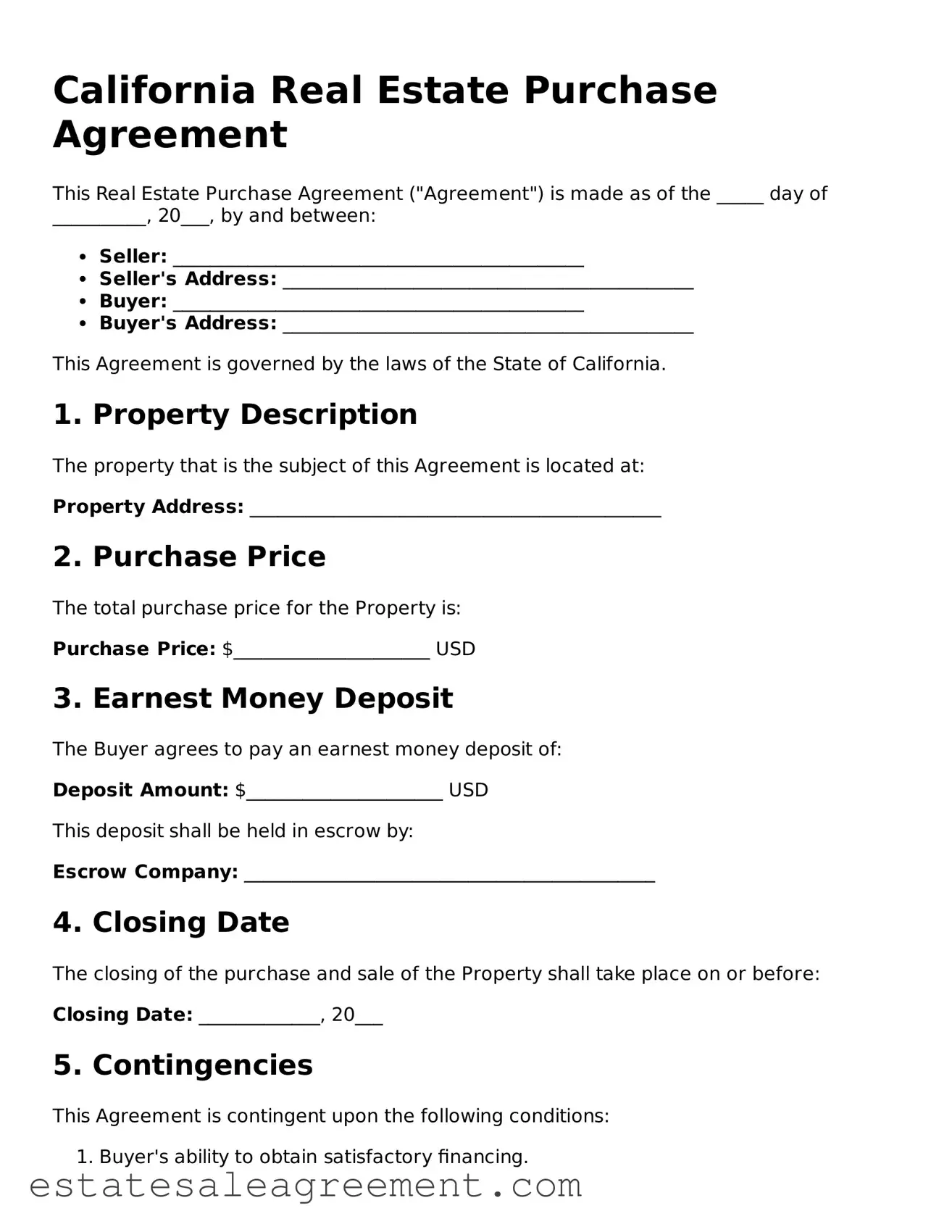California Real Estate Purchase Agreement
This Real Estate Purchase Agreement ("Agreement") is made as of the _____ day of __________, 20___, by and between:
- Seller: ____________________________________________
- Seller's Address: ____________________________________________
- Buyer: ____________________________________________
- Buyer's Address: ____________________________________________
This Agreement is governed by the laws of the State of California.
1. Property Description
The property that is the subject of this Agreement is located at:
Property Address: ____________________________________________
2. Purchase Price
The total purchase price for the Property is:
Purchase Price: $_____________________ USD
3. Earnest Money Deposit
The Buyer agrees to pay an earnest money deposit of:
Deposit Amount: $_____________________ USD
This deposit shall be held in escrow by:
Escrow Company: ____________________________________________
4. Closing Date
The closing of the purchase and sale of the Property shall take place on or before:
Closing Date: _____________, 20___
5. Contingencies
This Agreement is contingent upon the following conditions:
- Buyer's ability to obtain satisfactory financing.
- Completion of a satisfactory home inspection.
- Seller providing clear title to the Property.
6. Additional Terms
Additional terms relevant to this Agreement:
________________________________________________________________
________________________________________________________________
7. Signatures
By signing below, both parties agree to the terms stated in this Agreement.
Seller's Signature: _________________________ Date: __________
Buyer's Signature: _________________________ Date: __________
